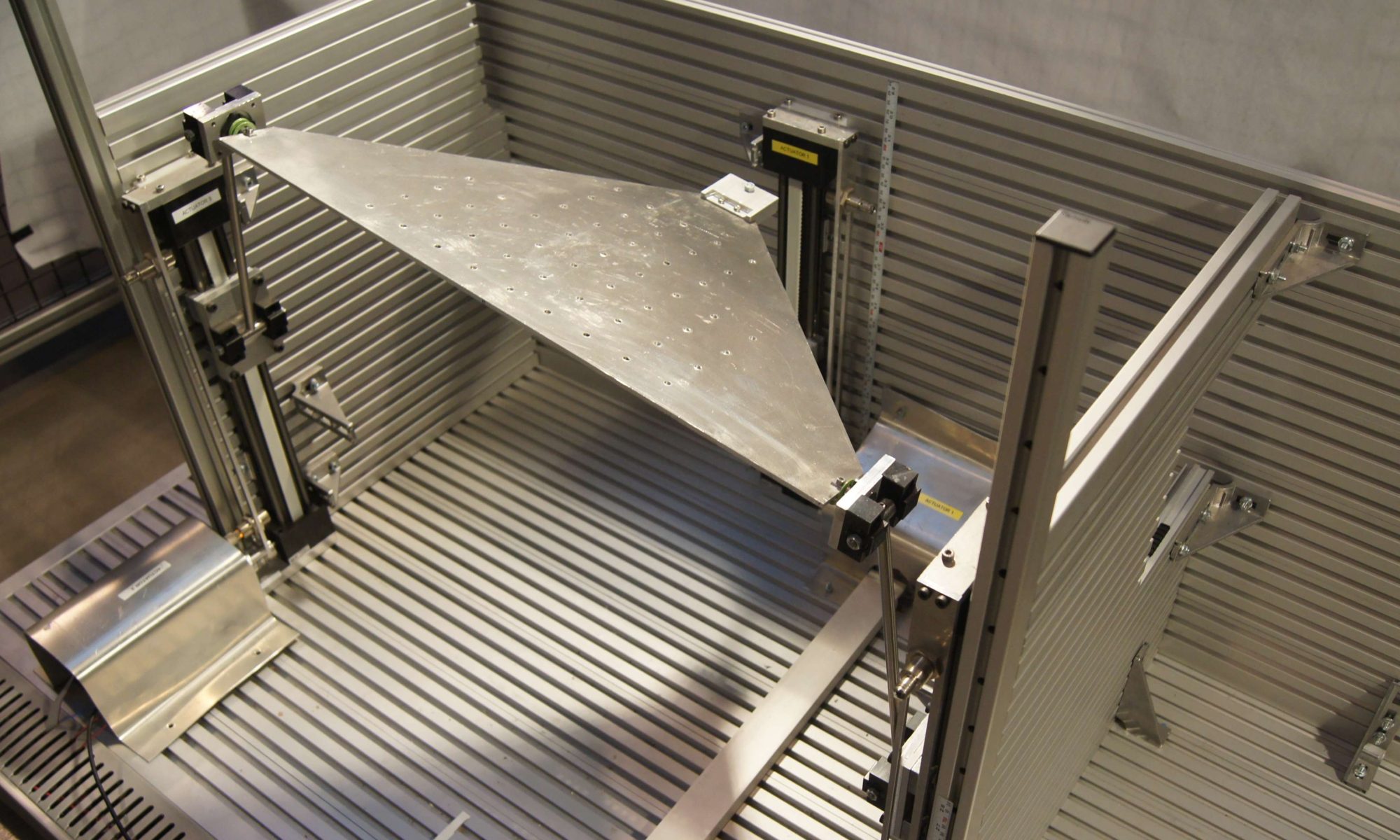Name of the project: Design, sysnthesis and verification of parallel manipulators for industrial production. The case of lower mobility platforms.
Reference: DPI2005-02207
Funding: Ministerio de Educación y Ciencia
Period: 2005 – 2008
Parallel manipulators have a kinematic structure that has some advantages over serial manipulators with an anthropomorphic structure, such as rigidity, precision, velocity and acceleration. Nowadays, these characteristics are highly demanded in the manufacturing of aeronautical components and for the automotive industry. Parallel manipulators have found a place in applications such as flight simulators or pointing devices, but they have not jumped into industrial production yet. This is due to several causes. First, the parallel structure that provides so many advantages has a complex kinematics that generates highly non-linear equations, and as a consequence the technological knowledge in parallel manipulators is still under development. Second, some industrial applications of these manipulators (above all the pioneers) did not have an adequate structural and dimensional design, and therefore did not accomplish the expectation created.
The objectives of this project are focused on solving the problems mentioned. Firstly, a design methodology for parallel manipulators is going to be established according to the following scheme: a structural conception that defines the motion of the platform, a dimensional synthesis that guarantees the geometric functionality of the manipulator, and a verification of the stiffness and dynamic characteristics of the robot in its workspace. Secondly, a tool for an aided design will be developed with the capability of verification of a parallel manipulator of a general topology according to some indicators. The main abilities of such a tool are: simulation of mechanisms, solving of the position problems, velocities and accelerations, detection of singular positions, motion pattern of the platform, workspaces for every assembly mode, singularity, stiffness and frequency mapping. Thirdly, these two developments will be used for the design and construction of a prototype of a lower mobility platform (4 or 5 degrees of freedom, three translations, one or two passives, and one or two rotations depending on the application). The platform is intended for machining operations on aeronautical components of convex surfaces and large dimensions.
